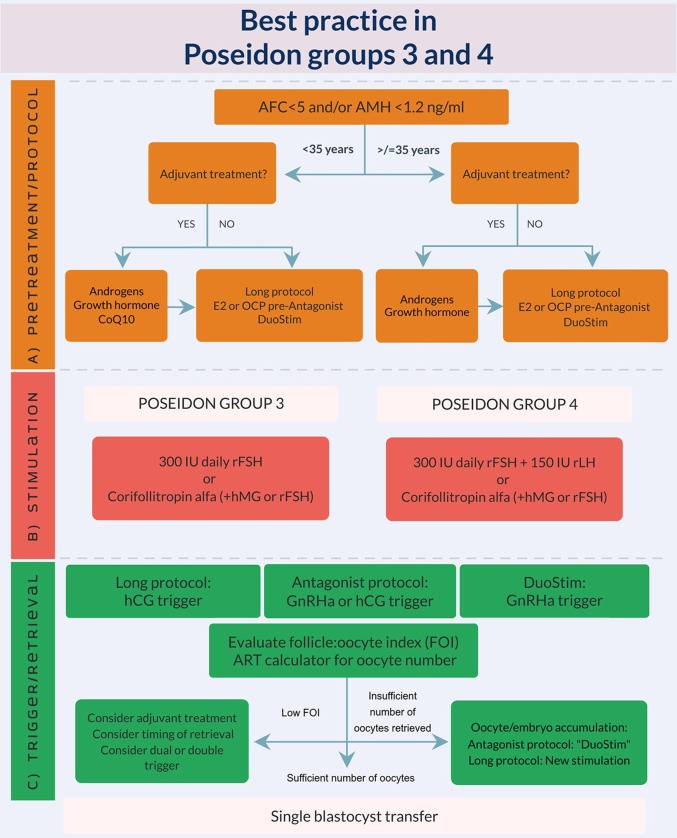Figure 2.
Best practice in POSEIDON groups 3 and 4. (A) Pretreatment is rarely the first option in low prognosis patients, but in case of low response to ovarian stimulation, e.g., asynchrony of follicular growth and inadequate ovarian response, pretreatment should be considered. The choice should rely on availability, clinical experience and patient preference. Stimulation protocol might start using GnRH antagonist co-treatment keeping in mind the possibility of converting to DuoStim to achieve the individualized oocyte number (according to the ART calculator). Otherwise a long GnRHa protocol should be considered first choice. (B) Ovarian stimulation strategy: First choice in Poseidon group 3 is the GnRH antagonist cycle using either 300 IU daily of rFSH alone or Corifollitropin alfa followed by either rFSH or hMG. In POSEIDON group 4 patients, rLH (75–150 IU daily) should be added from day 1 of stimulation, unless the combination of Corifollitropin alfa and hMG was chosen. GnRH antagonist co-treatment allows the use of Duostim. (C) Ovulation trigger strategy: In the long GnRHa down-regulation protocol hCG is mandatory as ovulation trigger, whereas GnRHa is mandatory in the follicular phase stimulation of the DuoStim protocol. All trigger agents can be used for the luteal phase stimulation. In non DuoStim GnRH antagonist cycles, the choice of trigger between GnRHa and hCG should rely on the embryo transfer strategy (fresh or frozen), patient characteristics, and clinical experience. In cases with a low antral follicle to oocyte ratio (FOI) as determined on trigger day (4), clinicians should consider: pretreatment including short term estrogen or progestin therapy, or OCP for synchronization of the follicles prior to stimulation, adjuvant LH activity during stimulation, or changing trigger strategy to either dual or double trigger. In case of an insufficient number of oocytes retrieved as determined by the ART calculator, the probability of transferring a euploid embryo should be discussed with the patient to counsel whether an immediate transfer or a new stimulation should be suggested (3).

